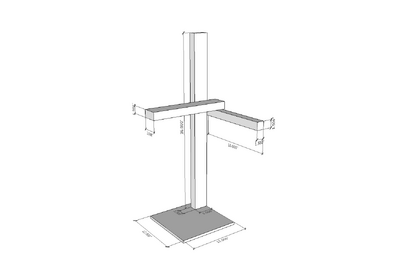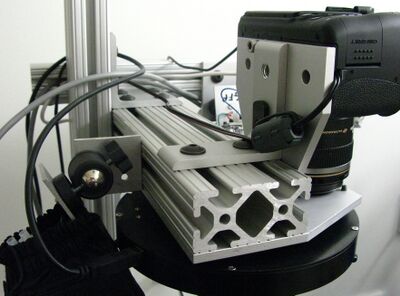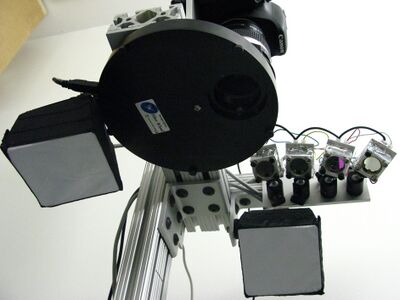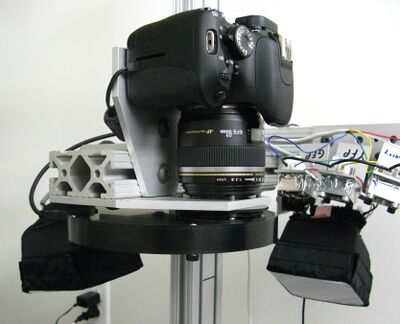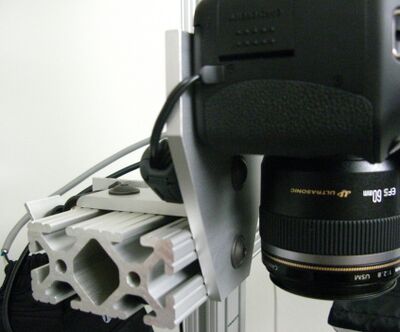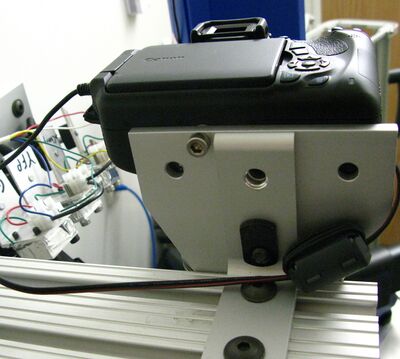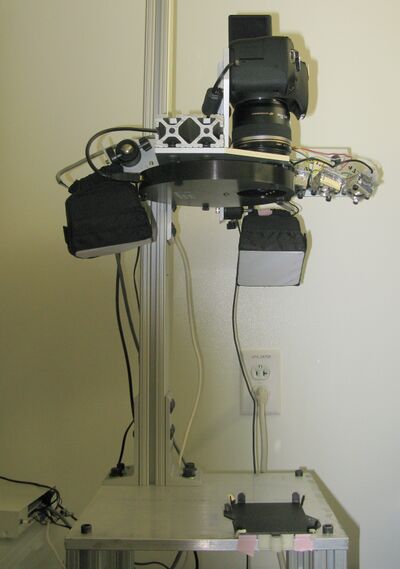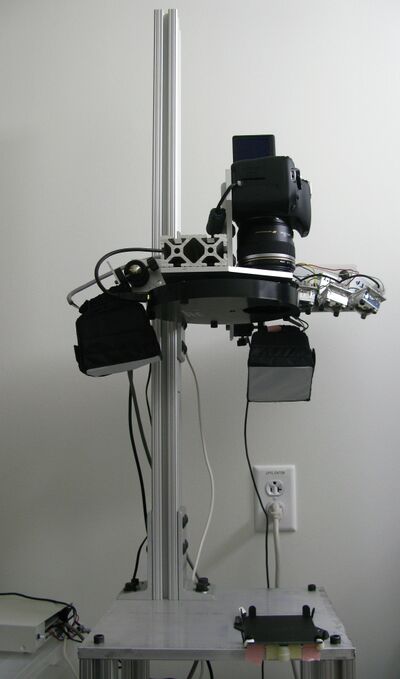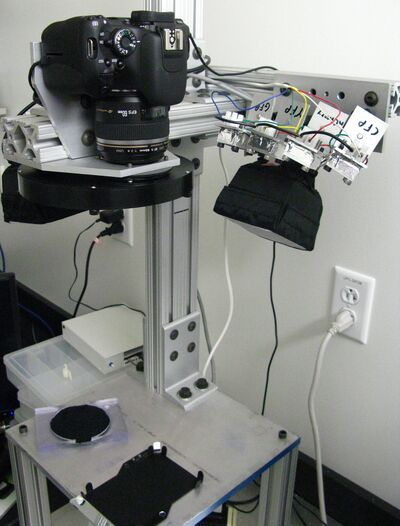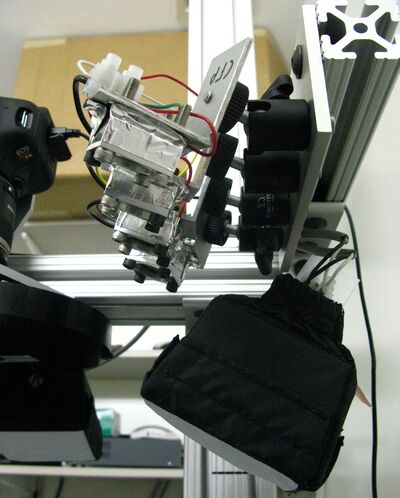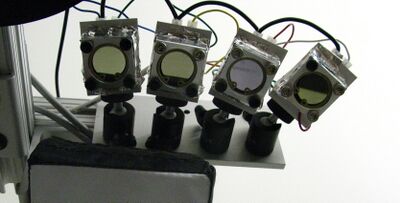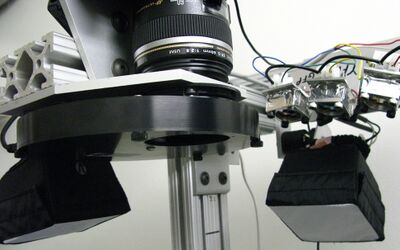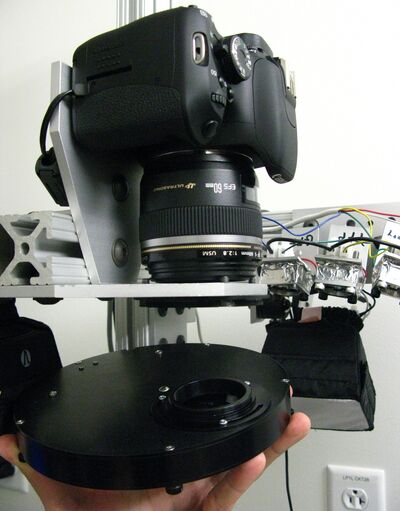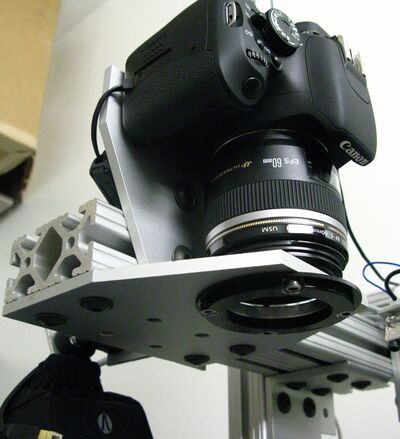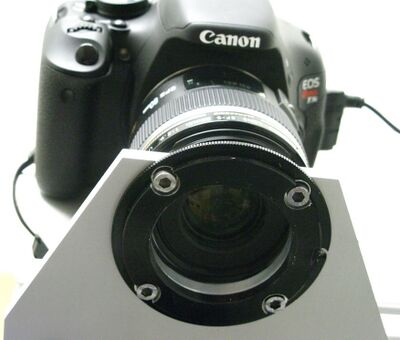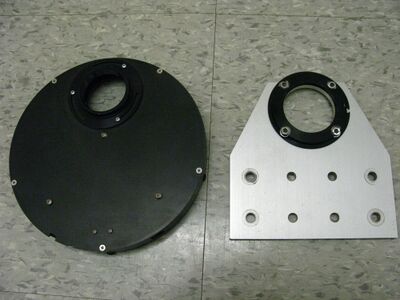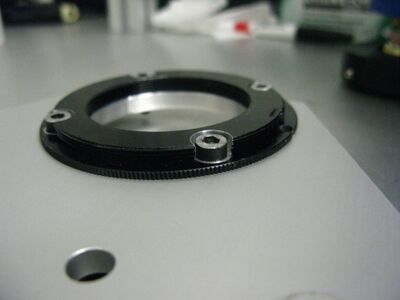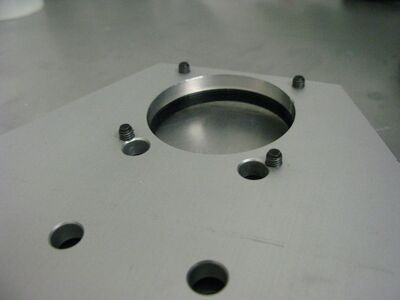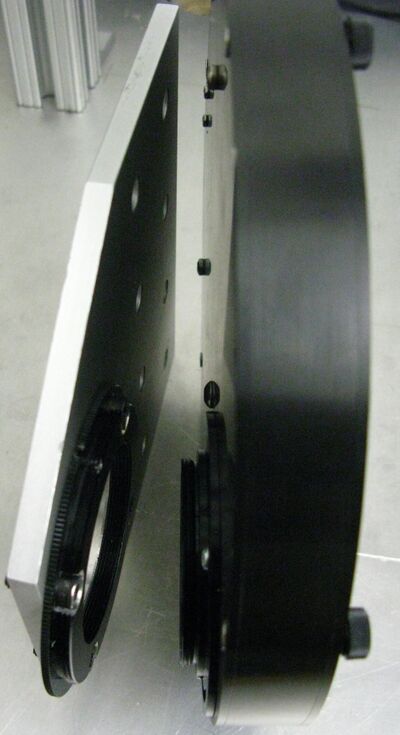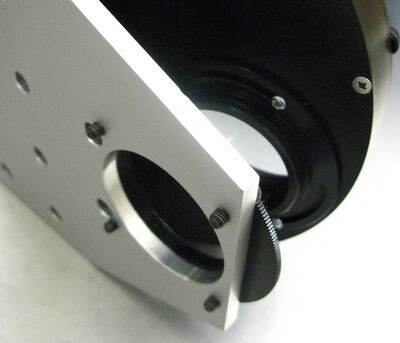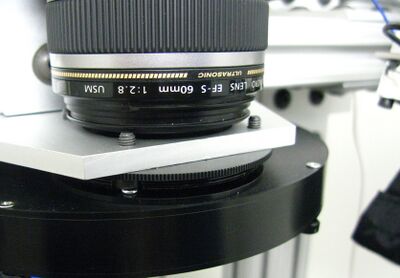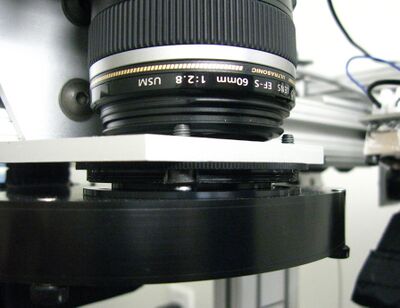Macroscope
From OpenWetWare
Jump to navigationJump to search
In the beginning, there was Disco!
coming soon ...
Macroscope:
The Macroscope is a device for fluorescence imaging at macro-scale. It was designed to image colonies and lawns of fluorescent bacteria growing on agar plates [Ref 1], but could be used for multiple other applications in biology and engineering.
Credit: Remy Chait, Michael Baym Kishony Lab, Harvard Medical School
To build:
parts list and sources
basic structure
custom parts (cam and filter mounts)
- Filter wheel mount. McMaster-Carr part *** machined to this spec ^^^. This part can also be ordered directly from emachine shop. Requires mating to the adapter that comes with the filter wheel (picture links).
- Camera mount. McMaster-Carr part *** drilled with 1/4" bit to allow mating to camera tripod mount.
- LED filter coupler. 1 per LED. Available through eMachine Shop. design link.
- LED mount and heat sink. 1 per LED. Available through eMachine Shop. design link.
camera
- Canon T3i, with Canon EF-S 60mm f/2.8 Macro USM Lens, and Canon ACK-E8 AC Adapter Kit for Rebel T2i
- Canon SDK can be requested here.
LED illumination packages. filters and leds - chroma...clearance...mention gel filters...
- Ball & Socket heads for aiming LEDs.
- LED lenses
* Wide dispersion * Medium dispersion * Narrow dispersion used for fluo illumination.
* Single Luxeon LED lens for BFP
- LEDs
* CFP * GFP * YFP * mCherry * White * BFP
- Excitation filters. Chroma clearance bin as possible.
* CFP: Chroma D436/20x 25mm * GFP: Chroma S470/40x 25mm * YFP: HQ500/20x 25mm * mCherry: Chroma ET572/35x 25mm * BFP : Chroma D395/40 25mm
Emission filters and automated filter wheel
- Emission filters. Chroma clearance bin as possible (50mm filters = $$)
* CFP: Chroma D480/40m-50mmr * GFP: Chroma D530/20 50mm * YFP: Shares GFP emission filter * mCherry: HQ645/75m 50mm * BFP: Chroma 460/40 55mm (oops, should have been 50. Works anyway, not perfectly.)
- Starlight Xpress USB 5 Position 2" Filter Wheel - 72mm Male Input/ Output. Make sure here to get a filter wheel insert that is for unthreaded filters!
control box
- Measurement Computing Switch and Sense 8/8 Overdoing it, but very plug and play
plate registration
- this it???
- LightPad A920 6x9 Light Box for transmission imaging.
- Hey! - Include modifications to registration plate and light box(pins) for transmission imaging.
Software (link to canon SDK req; starlight express drivers, switch&sense)
- Switch and Sense
- Canon SDKs are requested here.
- Macroscope operating software ....(Binary, Source links)
- Filter wheel software .... (link)
etc
Thoughts:
notes
- Fluorescence shading correction. Divide images by a flat field standard
- Filters. Interference filters are far and away the most costly part of this device, but have an enormous impact on signal to noise ratio. A very inexpensive but lower S/N filter option is to use theatric gel filters, available with transmission spectra from RoscoLUX, ... (ref worm breeders). A still cheaper option is to see how much fluorescent signal can be extracted using just the RGB filtered channels of the cameras sensor, along
- Often, grabbing a single channel of the output fluorescent image (eg, Blue for CFP emission) further cuts some background and may improve the signal for certain fluors.
improvements
- Better darkfield illumination
- 3D imaging of fluorescence in transparent volumes using sheet illumination (laser, cylindrical lens, )
- Hyperspectral imaging to allow fluorescent compound identification and spectral unmixing of combinations of FPs, and for transmission spectroscopy...(ref)
Similar Tech
- Chait R, Shrestha S, Shah AK, Michel J-B, Kishony R (2010) A Differential Drug Screen for Compounds That Select Against Antibiotic Resistance. PLoS ONE 5(12): e15179. doi:10.1371/journal.pone.0015179
- ? Ian Chin-Sang1 and Weiwei Zhong Using LEDs as a low-cost source to detect GFP and DsRED Worm Breeder's Gazette, Department of Biology, Queen’s University, Kingston, ON, Canada, 2Department of Biochemistry and Cell Biology, Rice University, Houston TX
- sample images?
